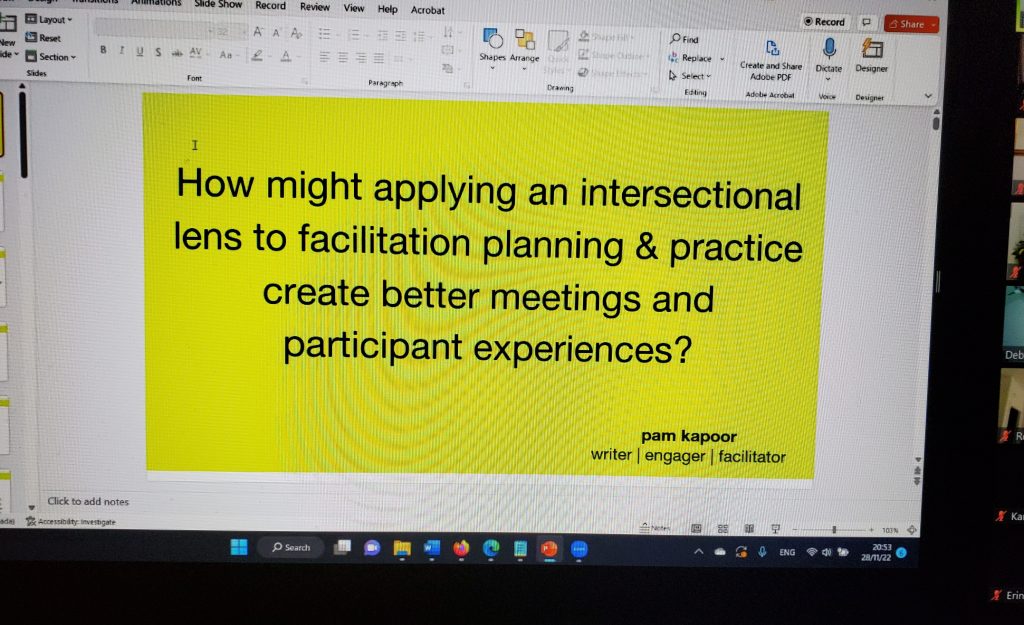Intersectionality? Is it a new word for you? One you know well? A way of looking at the world? A tool you use to plan meetings and facilitated sessions?

The #yycfacilitators network met online in November 2022 to learn from Pam Kapoor, writer, engager, and facilitator about #intersectionality. Contact Pam to learn about her work. LinkedIn:
linkedin.com/in/pamkapoor
Pam asked us:
How might applying an intersectional lens to #facilitation planning & practice create better meetings and participant experiences?
Pam said intersectionality is:
- the different ways people experience multiple forms of inequality or oppression at the same time.
- the ways in which systems, institutions, structures, and practices collectively create and reinforce conditions of disadvantage and privilege.
She explained that intersectionality (intersectional theory) was coined in 1989 by American civil rights advocate, Kimberlé Williams Crenshaw. Pam also described the connection and differences between intersectionality and diversity, equity, inclusion (#DEI).
I first learned about intersectionality through work with The Calgary John Howard Society and Edmonton John Howard Society. Think about an individual who is leaving a correctional institution and reintegrating into the community. What are the identities and experiences that may affect how they feel about themselves and are perceived by others? Race, health, education, employment, sexual orientation, gender, criminal involvement, family, and on and on …
How could I as a #facilitator apply an intersectional lens to my work?
With Pam, we started to explore this topic. Here are a few ideas to apply intersectionality.
- Identify and acknowledge the factors that make up your identity.
- Write a description of yourself using an intersectional lens.
- Ask a trusted colleague or client to write a description of you.
- Work hard to identify your biases towards the social identities of others.
- Think of the individuals that will join a meeting or workshop. What are their backgrounds? Experiences? How might each of them describe themselves?
- Be curious about participants. Ask them before and during the session for their life experiences, perceived identities, and factors affecting them.
- Learn about intersectionality through books, websites, podcasts, workshops, and conversations.
I found a resource by CBI Catalyzing Collaboration who wrote about intersectionality and facilitation as part of a series of blog posts related to facilitator identity in complex public disputes. https://www.cbi.org/article/part-one-intersectionality-and-facilitation/
My sincere appreciation to Pam Kapoor for her leadership on intersectionality. I have much more to learn.
